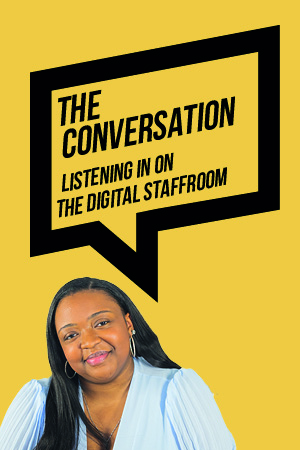Publisher
John Catt Educational
ISBN 10
1915261244
Published
17 May 2022
Well, it had to happen and it has. At last, someone has written a good book about behaviour for school leaders.
It’s not a crowded market. Leadership books are ten a penny, and most of them are dreadful, impractical mood boards of their authors’ ideological tastebuds. What sets Sam Strickland’s Behaviour Manual apart from its tree-wasting peers is that it is written by the headteacher of a challenging school that has successfully turned its behaviour around.
That’s something of a novelty in this field, where such accounts are frequently self-penned hagiographies of how heads wish things had been, rather than how they are. By contrast, Strickland’s lessons in this arena are hard-won, and the experiences he shares in this book are worth the sweat and effort.
The Behaviour Manual covers a comprehensive package of topics that will prove useful to any practitioner. Helpfully, it is divided into three levels of discussion: what senior leaders should do (oddly described here as ‘the mothership’); then middle leaders; and finally classroom teachers. This is a taxonomy many commentators miss, as the needs of each group often overlap and diverge in equal measures.
The best advice to be found here is for leaders, because there is such a dearth of it elsewhere. I remember starting my first middle-leadership job. I had no idea what it entailed so I asked the incumbent, “What do I do?”. To which came the reply: “I’m not entirely sure. You have to chair these meetings.” And that was it. I made my own way, and as this week’s Education Support research shows, too many leaders still do.
The Peter Principle states that in any organisation, people tend to be promoted to the level of their incompetence. In education, I think it’s often more a case of non-competence. Because how can we hold people accountable for something they were never trained to do?
The best advice to be found here is for leaders
But with this book in hand, behaviour needn’t be anyone’s domain of non-competence. Strickland throws the kitchen sink at each section. Every tip, from staff meetings to training to parents’ evenings, is solid, reliable and succinct.
Strickland machine-guns every topic with the enthusiasm of Bugs Bunny with a Gatling full of snowballs, and if I have any criticism at all, it’s that the result often reads like a list of unconnected issues. This manual would benefit from a more structured, more incremental and more coherent approach, if not an overarching organising theory to drive it.
Yes, it’s a how-to and a what-to-do, not a why-to-do. But the potency of its immediate usefulness is also something of a downside, because doing something without a clear reason can lead to a lack of interpretation. The best leaders lean into effective strategies knowing when and how to adapt them. That stems from a clarity of purpose, and following strategies like a recipe can undermine that.
But that’s mining for flaws. I don’t want to come across like some Chandler Bing complaining that my diamond shoes are too tight, or my wallet’s too small for my fifties. Strickland’s advice is extremely good. It’s terse, practical, and pointed and has no time for small talk. It really is written like a manual, with the expectation that the reader will turn to each sub-section when faced with a new dilemma. At times, I yearned for more biographical colour, but Strickland has explored this well in his previous two books, so he can be forgiven for avoiding further reminiscences here.
This is clear, solid advice for anyone running a school or line-managing others in school. Unlike many of its competitors, it is mercifully free from any attempt to describe its author as an inspirational messiah, beloved by all. It eschews telling us how much the author loves children more than anyone else. And satisfyingly, it describes in simple terms how someone might create an environment that nurtures and teaches children as effectively as possible, by someone who has actually done such a thing.
Currently, that’s almost a revolutionary act. But it had to happen, eventually.












Your thoughts